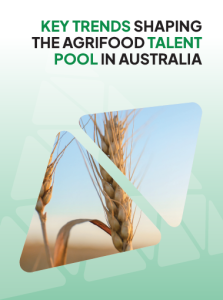Agriculture Is Now The Powerhouse Driving Economic Growth in Australia
By Dr. Ray Johnson, Senior Agribusiness Consultant and Managing Director, Agricultural Appointments The latest figures just released in September 2017 from the Australian Bureau of Agricultural and Resource Economics and Sciences (ABARES) show that Australian agriculture was the largest contributor to national GDP growth in 2016-17, contributing 0.5 percentage points of national total 1.9 per…
By Dr. Ray Johnson, Senior Agribusiness Consultant and Managing Director, Agricultural Appointments
The latest figures just released in September 2017 from the Australian Bureau of Agricultural and Resource Economics and Sciences (ABARES) show that Australian agriculture was the largest contributor to national GDP growth in 2016-17, contributing 0.5 percentage points of national total 1.9 per cent growth. Gross value of farm production is estimated by ABARES to have reached a record $62.8 billion in 2016-17.
The agricultural sector also grew the fastest of all 19 industries in 2016-17—up a formidable 23 per cent, particularly driven by the grains and livestock industries, but with other agricultural industries also performing strongly.
Livestock and cropping industries were major contributors, but other billion-dollar agriculture industries were also significant. The value of farm exports alone is estimated by ABARES to have reached a record $48 billion in 2016-17, plus fisheries exports of around $1.4 billion and forestry product exports of over $3 billion.
Agriculture contributed over $50 billion in exports in 2016-17, just under 14 per cent of our total goods and services exports. This is up from $41 billion five years ago. Grains and livestock products each contributed around $10 billion each to this export performance, other agricultural industries are also billion-dollar performers.
For example, in 2016-17 our pulses exports to the world were worth over $3 billion, wine exports $2.4 billion, nuts exports $822 million and citrus over $330 million. Almond exports are up over 50 per cent for the first half of 2017. Chickpea exports to India increased by almost 90 per cent in 2016-17 to a record value of $1.1 billion.
The industry has also seen strong growth in exports to China, with China now overtaking the US as our most valuable market for wine for the first time ever. Wine exports to China totalled $596 million in 2016–17, a 43 per cent increase on the previous year. It is now accepted that the “clean, green” reputation of Australian food has huge appeal for the increasingly cashed-up Chinese. Along with high-profile success stories such as Swisse Vitamins and A2 Milk, which have made millions selling to Chinese consumers, other companies such as Bellamy’s Organic and Blackmores have had a bumpier ride exporting to China.
The huge Chinese group Alibaba sees Australian fresh produce as its next big opportunity for growth in its major supermarket chain, which services more than half-a-billion customers. Alibaba total revenue jumped 60 per cent to the equivalent of $7 billion last year, with Australia the fourth highest selling market during its Double 11, or “Singles Day”, shopping event last year.
Already the growth in China has turned around the fortunes of a number of historically struggling horticulture industries in Australia, including wine, table grapes and citrus. In my view Australian agriculture is on the cusp of dramatic expansion, with the major impediment to growth remaining the ongoing skills shortage and low numbers of agriculture graduates being turned out by Australian universities.
The Latest Updates
Let’s look at the current trends in job demand and talent availability in the agriculture and agribusiness sector in Australia over the second half of 2023 and the first quarter of 2024. There was a weakening of job demand in this sector but a slight improvement in candidate availability and job interest during this period….
In times past, people’s working lives often played out over many years at one company, but now the world has vastly changed. These days it is common to shift between jobs and organisations, but this practice raises questions as to what is today considered the Goldilocks time to spend in a job? How often do…
Employee retention matters. Organisational issues such as training time and investment, lost knowledge, mourning, insecure co-workers and a costly candidate search aside; failing to retain a key employee is costly. Various estimates suggest that losing a middle manager costs an organisation up to 100 percent of their salary. The loss of a senior executive is…











